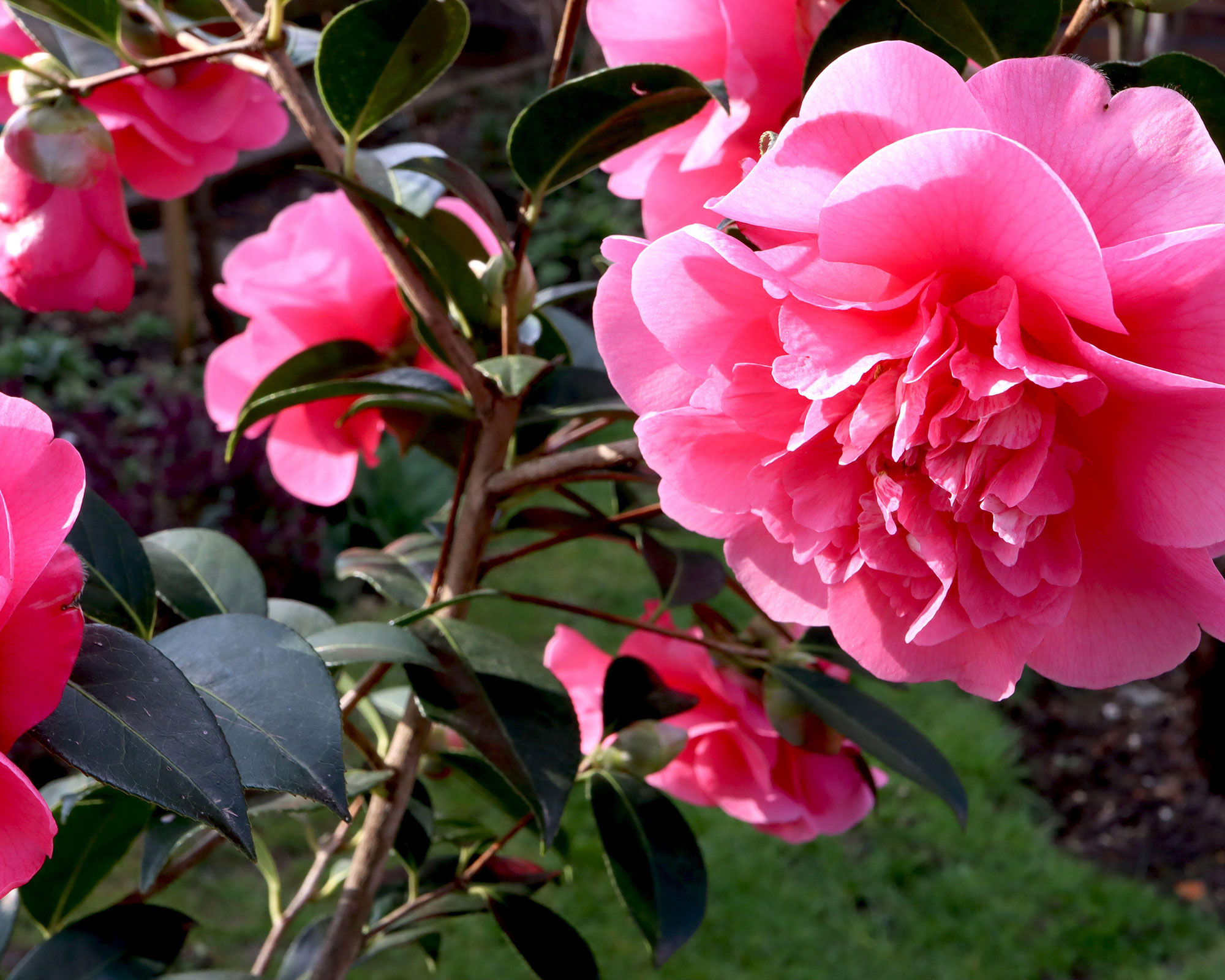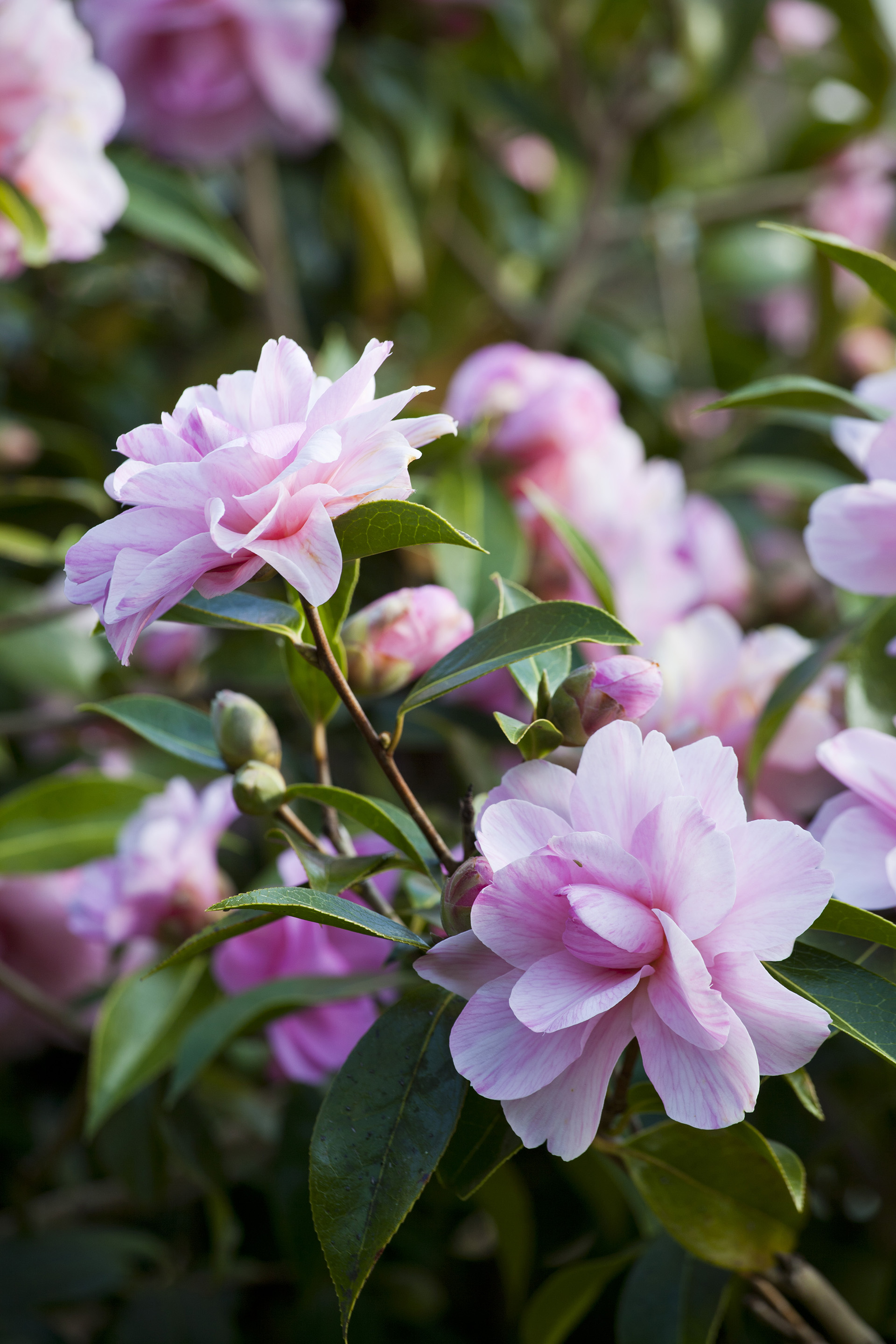How to grow camellias – for bold and showy blooms
Learn how to grow camellias and bring vibrant color and elegance to your yard


If you prize beautiful blooms, then discovering how to grow camellias must be at the top of your gardening list. With their large gently ruffled flowers set against glossy dark green leaves they are a real standout shrub.
Growing up to 39ft (12m) and 26ft (8m) wide, these statement plants with a graceful habit are suitable for both flower bed ideas or containers. Evergreen foliage means that they are useful for screening and maintaining privacy, too.
Even better is that they are exceptionally easy to grow – providing you have or can supply them ericaceous or acidic soil – and our expert guide has all the information you need.
Learn how to grow and how to prune camellias to keep them healthy and maximize their flower power – it’s easy when you know how.

How to grow camellias
The bottom line on how to grow camellias is that they need little attention other than acidic soil and rainwater to reliably provide a stunning display for much of the winter and early spring months, when very little else is in flower.
With two distinct groups to choose from, growing camellias means you can enjoy spectacular garden color from the fall through to early spring. Camellia sasanqua bear their blooms from late November to December while Common camellia (Camellia japonica) and hybrid Camellia x willamsii put on an exceptionally long and spirited show from October through to May.
There are many types of camellias, with flower shapes varying from neat and orderly concentric petals to looser, ruffled arrangements that are reminiscent of roses and peonies. Colors range from fiercely intense scarlet and cerise to blush pink and pure white. Many blooms have the added bonus of pronounced central golden stamens. Besides adding extra texture and interest, they are also a vital nectar source for early waking pollinators.
One little known fact about camellias is that a few varieties are scented. With fragrances varying from subtle apple to sweet jasmine they lend extra sensory charm to your yard, especially if placed on a front porch or near a walkway.
Find the best spot for a camellia
Essential to know about how to grow camellias is that most varieties are partial shade lovers, although graceful Camellia sasanqua is also happy in a sunnier spot. Finding them a sheltered position, protected from cold and icy winds is key, however, as their buds and petals can be prone to frost damage which turns them brown. Early morning sun shining on frost covered buds and flowers can also cause similar damage.
When it comes to soil type, these beauties that originate from China, Japan and Korea resolutely prefer acidic conditions. Ericaceous compost is must for container-planted displays but in all cases the growing medium needs to be well draining yet moist.
‘Many camellias can be grown as wall shrubs which makes them invaluable for smaller yards or for placing beside a narrow walkway,’ says plant doctor at Crocus Helen Derrin. ‘Simply secure a sturdy support or trellis to a wall or fence, and tie on the pliable stems – ideally in a fan shape to get even coverage.’
Plant out a ready potted camellia
The best time to plant a camellia is in the fall. The remaining warmth in the soil encourages roots to settle and continue growing before colder weather takes hold. Nurseries tend to sell shrubs that are around 2 to 3ft (60 to 90cm) tall. Sturdy specimens, they need a planting hole large enough to accommodate the root ball and deep enough so the top of the root ball sits level with the surrounding surface. Firm down well – to remove any air pockets – and add a layer of mulch (well rotted compost or bark chippings) to help retain moisture.
How to grow camellia in a container
Wondering about how to grow camellias in a pot? Container garden ideas can provide them with the ideal growing conditions. Choose a planter that has good drainage – at least one big hole – to ensure the roots are not sitting in standing water.
The container needs to be at least 11in (30cm) in diameter and deep enough so the top of the plant’s root ball sits at least 2in (5cm) below the rim. Camellias are slow growing, so will only need repotting every two or three years but it’s worth checking the base of the pots for protruding roots regularly. Refresh the compost annually in spring to maintain healthy growth.
How to care for camellia
Keeping camellias well-watered, particularly during the fall when they begin developing their flowers, is essential. As natural acid lovers it’s important to avoid increasing the alkalinity of the surrounding soil so try to use rainwater.
Foliage color can also be an indicator as to the health of the plant and signal when it is time to feed. If the dark green glossy leaves turn yellow around the edges, the acidity levels in the soil need topping up, so feed your camellia with an ericaceous fertilizer. Do not fertilize camellias later than July though, as this can lead to bud drop.
The shape of these stately plants varies, from compact and open to tall and pendulous, and the way you should prune camellias depends on the desired effect. If shoots or branches are starting to impinge on their neighbors or outgrow their space, they can be cut back. This is best done straight after flowering.
Removing fading or damaged blooms will always improve the overall look of the plant but is in no way essential. It has no lasting effect on the health of the plant and can prove very time consuming.
Protecting a camellia from frost and snow
While container grown camellias can be moved to a more sheltered position, either inside a conservatory, porch or even just closer to the house wall, those planted in the ground or in very large planters will benefit from extra protection. Wrapping a sheet of garden fleece around the shrub, pinning or tying it in place, will provide enough insulation to prevent buds and flowers from being damaged.
Standout camellia varieties to grow
‘Camellias bring a real show to the garden and make fantastic specimen shrubs, to bring a focal point to borders,’ says Charles Carr, head of Hillier Wholesale Nurseries.
‘They also make great specimen plants to grow in containers. Just make sure to avoid positioning in a spot that is too hot and sunny and make sure to plant using ericaceous compost.
‘We grow a range of camellias on our Hampshire nursery, with the skill and expertise required to produce well-branched and floriferous plants. Our best-loved varieties are: Camellia japonica; ‘Brushfield’s Yellow’, the neat and fascinating ‘Dazzling Pink’, dual coloured ‘Lady Vansittart’ and ‘Lady Campbell’ with its double red blooms.’
How easy is it to grow camellias?
Camellias are very easy to grow. They do need an acidic soil, however, and it’s best to water them with rainwater. Bear in mind that most prefer semi shade, and they should also be located in a sheltered part of the yard.
What month do camellias flower?
Camellias can flower from fall through to spring, although it does depend on both climate and variety. For a long blooming period, opt for common camellia (Camellia japonica) and Camellia x willamsii, flowering from October to May. Camellia sasanqua, meanwhile, blooms in late November and December. For more information, see our guide on how to propagate camellias, and fill your yard with even more colorful shrubs this year.
Design expertise in your inbox – from inspiring decorating ideas and beautiful celebrity homes to practical gardening advice and shopping round-ups.

Journalist Jill Morgan has spent over 20 years writing and editing gardening, interior and property features. Titles she has worked on include The English Home, House Beautiful, Ideal Home, Houzz and Modern Gardens and she writes regularly for H&G as a Contributing Editor. Whilst she is a dab hand at renovation projects and DIY, she is happiest when out digging in the garden or planning a new border.